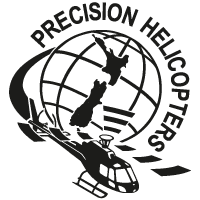Our strong local knowledge means we're able to assist beekeepers by finding the most productive locations to position their hives. Our pilots and ground crew are highly experienced in dealing with bees and are able to carry out all operations competently.
We know one of the key components of high honey yield is getting hives and bees as close as possible to the food source. In many cases, this means mānuka and the PHL team's in-depth knowledge of the regions is why we've been transporting beehives successfully for apiarists for over a decade with our customised hive transport systems.
PHL Beehive Transport in Action
Check out the video of our team in action transporting beehives with our specially designed beehive fork lifters
Getting Close To Mānuka
Getting your hives as close as possible to flowering mānuka means you're more likely to receive a high honey yield. Just as well our pilots and ground crew are experts at knowing what's going on on the land and knowing where your hives will thrive best! Because as you know, the closer we get bees to mānuka, the less distance they'll need to travel to do their buzy work.
Locating, Mapping & Assessing Blocks
All PHL helicopters are equipped with super accurate GPS mapping systems. This means we can assess blocks of land then provide clients with an outline of the number of hectares and suitable sites for hives with estimated carrying capacity.
Locating & Preparing Hive Sites
In some cases, natural clearings can be used as hive sites. We prefer to have an 18 x 18 metre clearing to safely hover the helicopter. If the natural clearing isn’t large enough, we can provide a scrub cutting team to enlarge the area prior.
PHL Staff Training
All beekeeping staff involved in the helicopter operation will complete a comprehensive helicopter safety course ensuring they're familiar with all risks and hazards associated with the operation. Daily on-site safety meetings are held and documented prior to commencement of work.
Specialised Lifting Equipment
We have two custom-built, specialised lifting systems for transporting beehives. This equipment ensures the bees and their hives are handled gently. We use a certified set of aluminium pallet forks for hive transportation work that are lightweight but strong, therefore eliminating the use of lifting strops.
The pallet fork system can carry four hives at a time with hives secured to a wooden pallet. At the loading site, the ground-crew prepare each load and in most cases, at the delivery point, the pilot has the ability to remove the forks from the pallet remotely from the helicopter without requiring any personnel on the ground.
Proof of Placement
Once your hives are flown into their delivery site, we'll supply you with the GPS data of the hive locations and the number of hives at each location.
Costing, Numbers & Timing
PHL can provide a turn-key quote on a per hive basis for delivery and retrieval. Pricing varies depending on the length of the flight. We usually deliver eight empty hives per load and retrieve four full hives per load.
As a rule of thumb, our helicopters travel at one nautical mile per minute with a sling load, and it generally takes 30 seconds to pick up a load and 30 seconds to place a load. So, the closer the loading site is to the hive delivery site, the shorter the haul time resulting in less helicopter time on the job.
Other Considerations
When deciding where to put your hives, you'll need to consider the timeframes you require to allow all applicable permissions are sought. For instance, Department of Conservation concessions, farmer permissions and any other considerations after due diligence has been carried out.
Need to move your bees?
Want to know more about transporting beehives with PHL?
Great, give us a buzz today!
